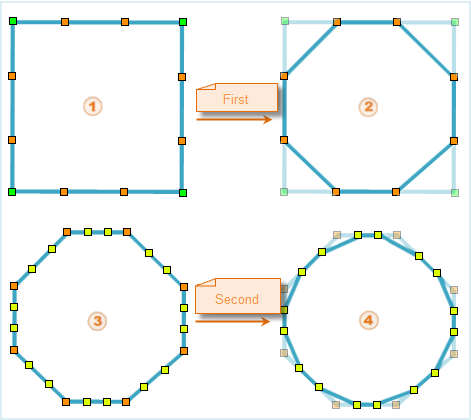The current SuperMap UGC (Universal GIS Class) series products provide two main smoothing methods for line and region datasets: B-spline and Corner-rounding methods.
1. B-spline Smoothing Method
The smoothness parameter controls the degree of smoothing. In B-spline method, it can also be understood as the number of segments divided by inserted points between two nodes.
When smoothing non-closed lines, the original curve shape should be preserved. The common approach is to maintain the positions of start and end points while increasing the number of divided segments at both ends (typically twice the smoothness value).
The effective smoothness value should be no less than 2. Higher values result in more nodes along line objects or polygon boundaries, producing smoother curves. Recommended range: [2,10].
B-spline node calculation differs for closed and non-closed lines:
- For closed lines: Final node count = (Control points) × smoothness
- For non-closed lines: Final node count = (Control points + 1) × smoothness + 1
- Control points refer to actual node count before smoothing.
- Closed line smoothing example (Note: Actual point count is one less than displayed due to overlapping first/last points)
When smoothing closed lines with smoothness=2 (inserting 1 point per segment):
Before smoothing: 3 points; After smoothing: 6 points.

Closed line smoothing with smoothness=10:

- Non-closed line smoothing example
Non-closed line smoothing with smoothness=2 (inserting 3 points at both ends):
Before smoothing: 6 points; After smoothing: 15 points.

Non-closed line smoothing with smoothness=10:

2. Corner-rounding Smoothing Method
The Corner-rounding method is computationally simpler and faster, but with limited effectiveness. It trisects original segments by inserting two points, then connects adjacent inserted points to round sharp corners. Each complete process constitutes one rounding iteration.
Smoothness here indicates the number of rounding iterations. Higher values produce more inserted points and smoother results.
- Closed quadrilateral smoothing with smoothness=2 (two iterations)

- For non-closed lines, start/end points remain fixed while processing middle segments as above.



